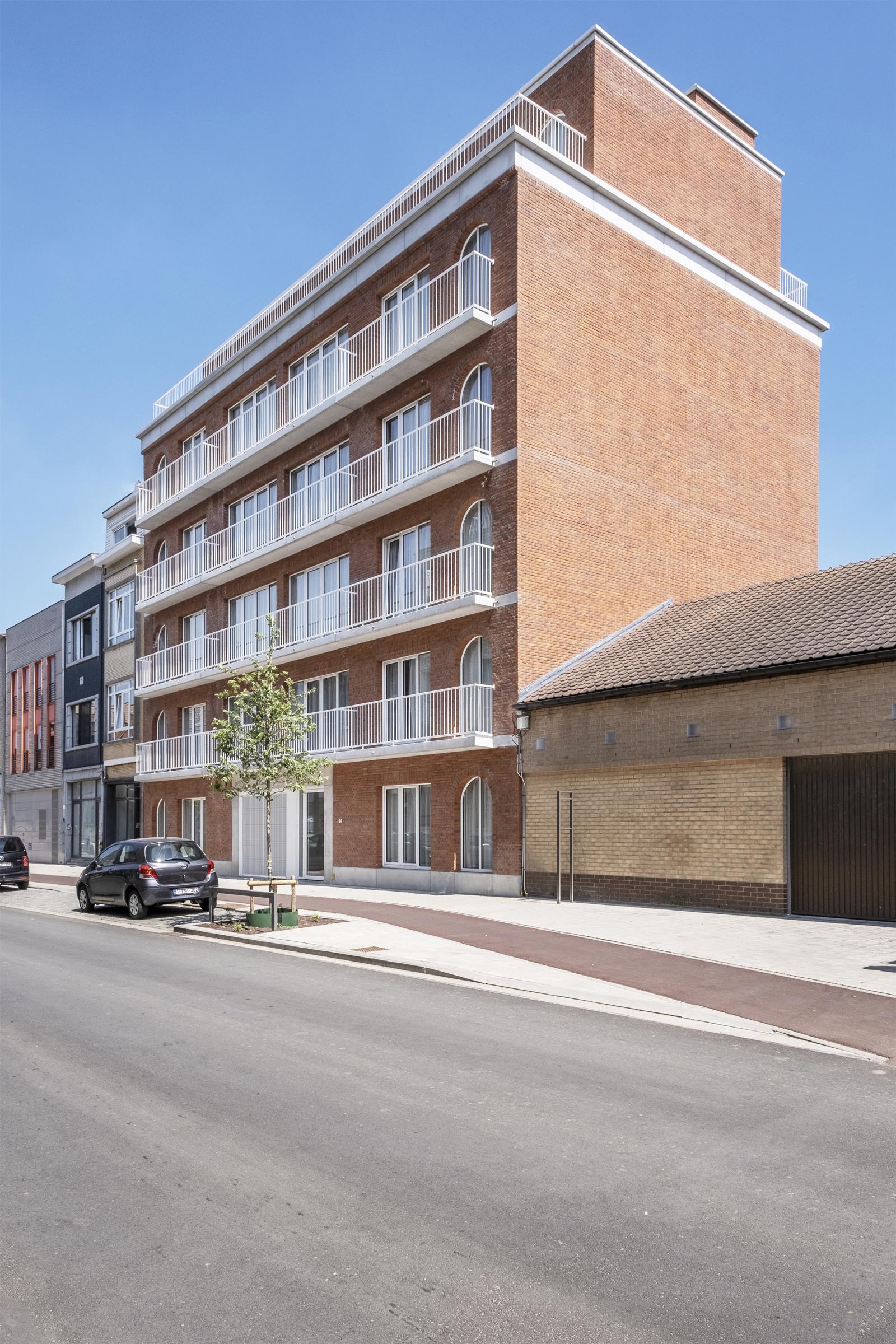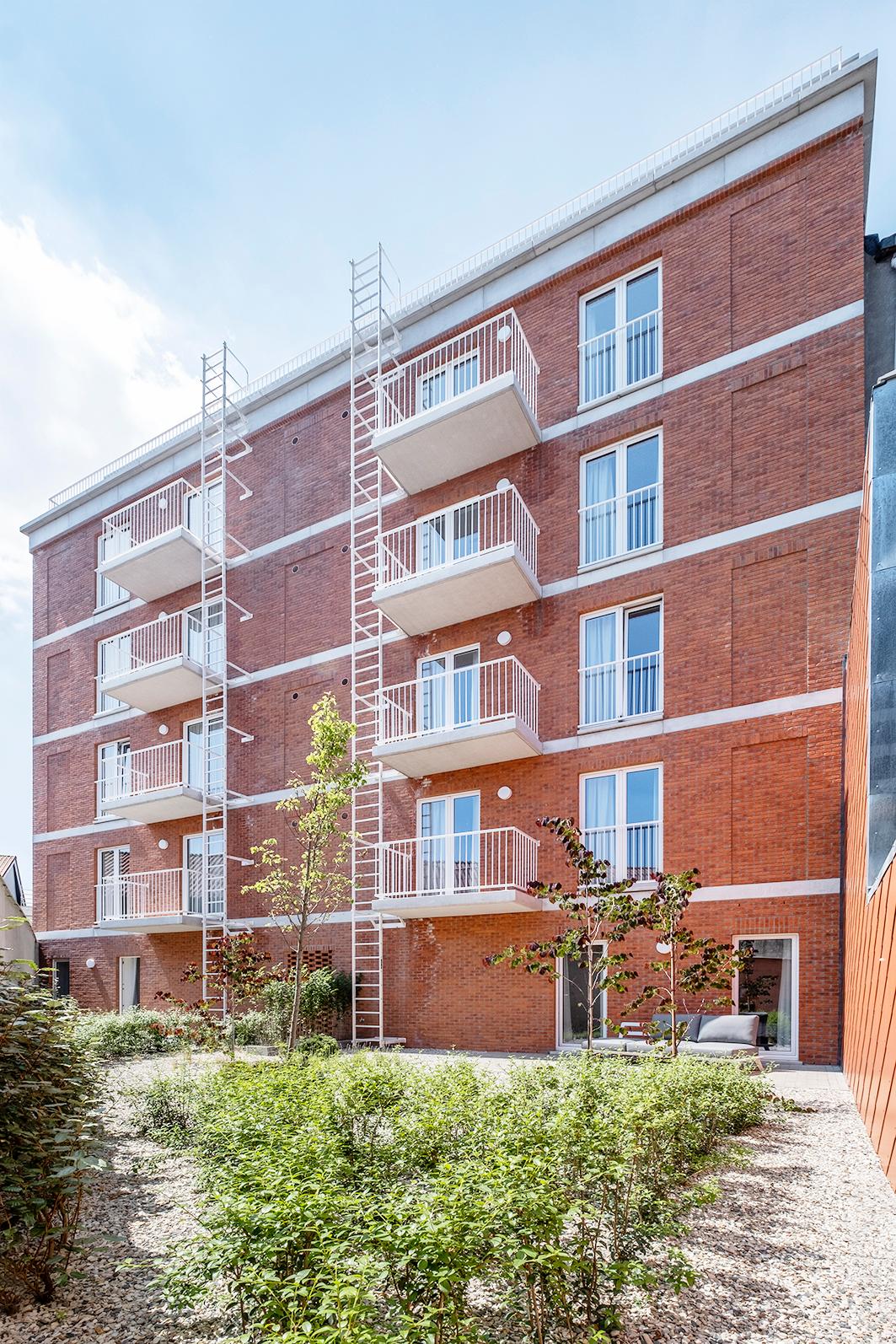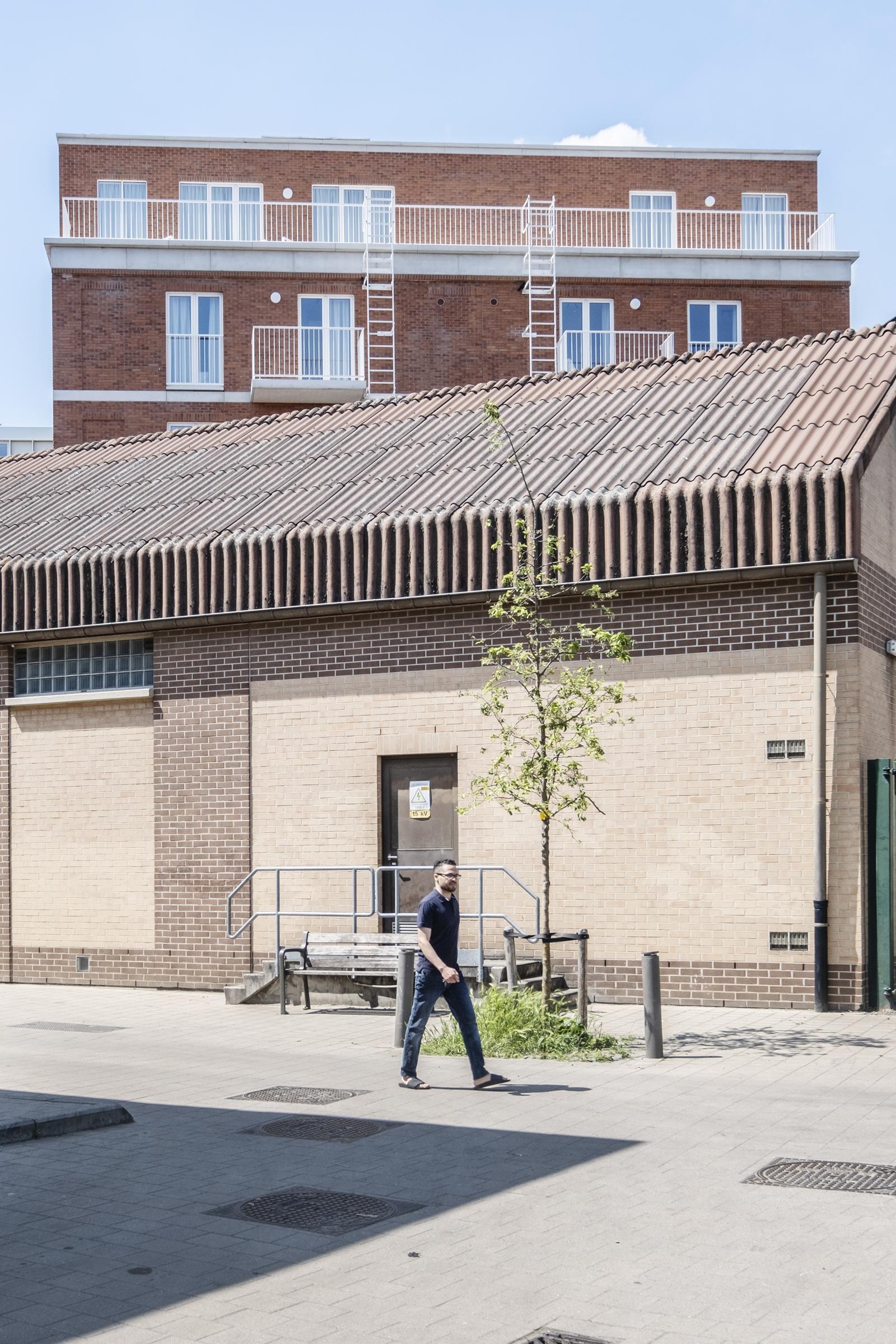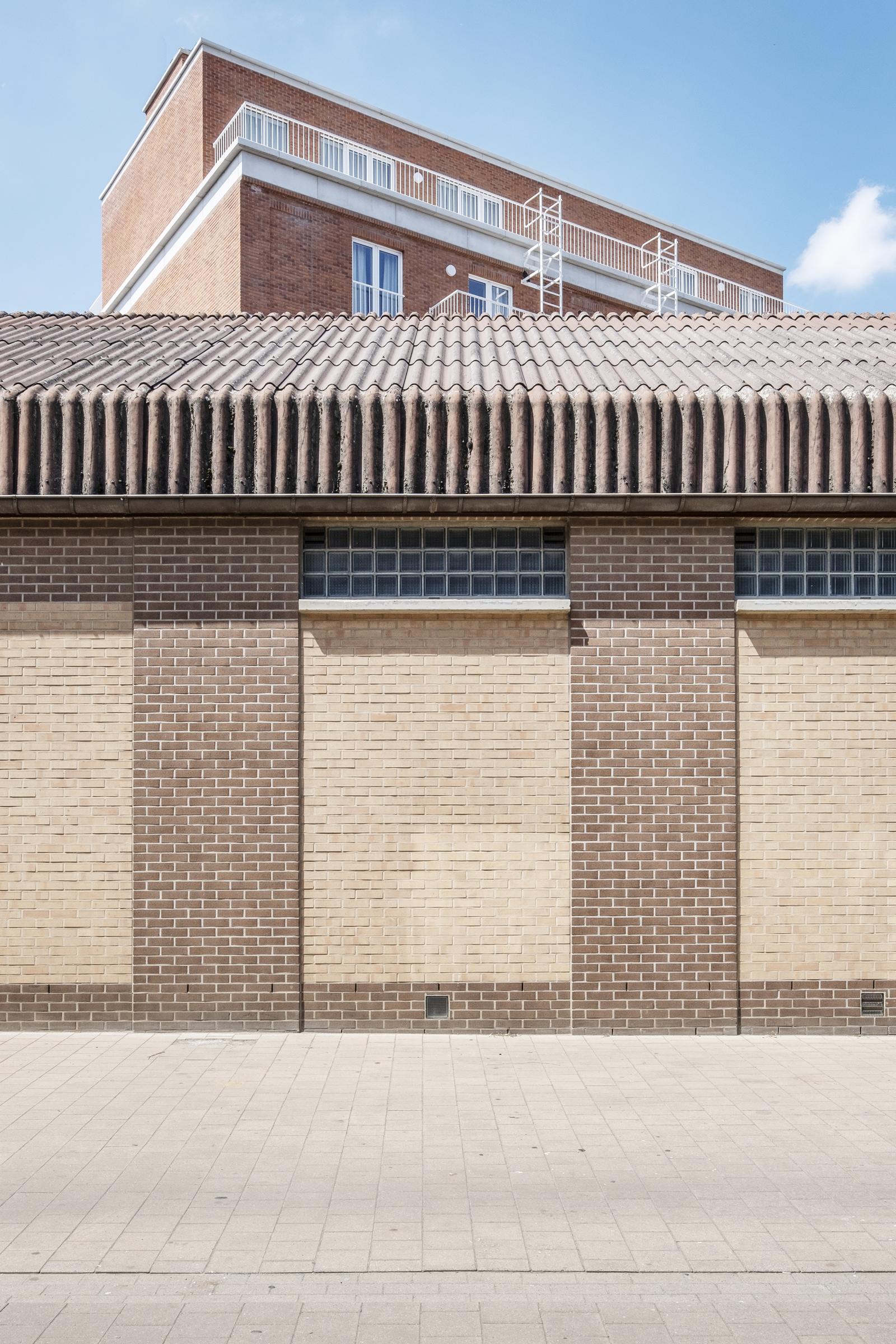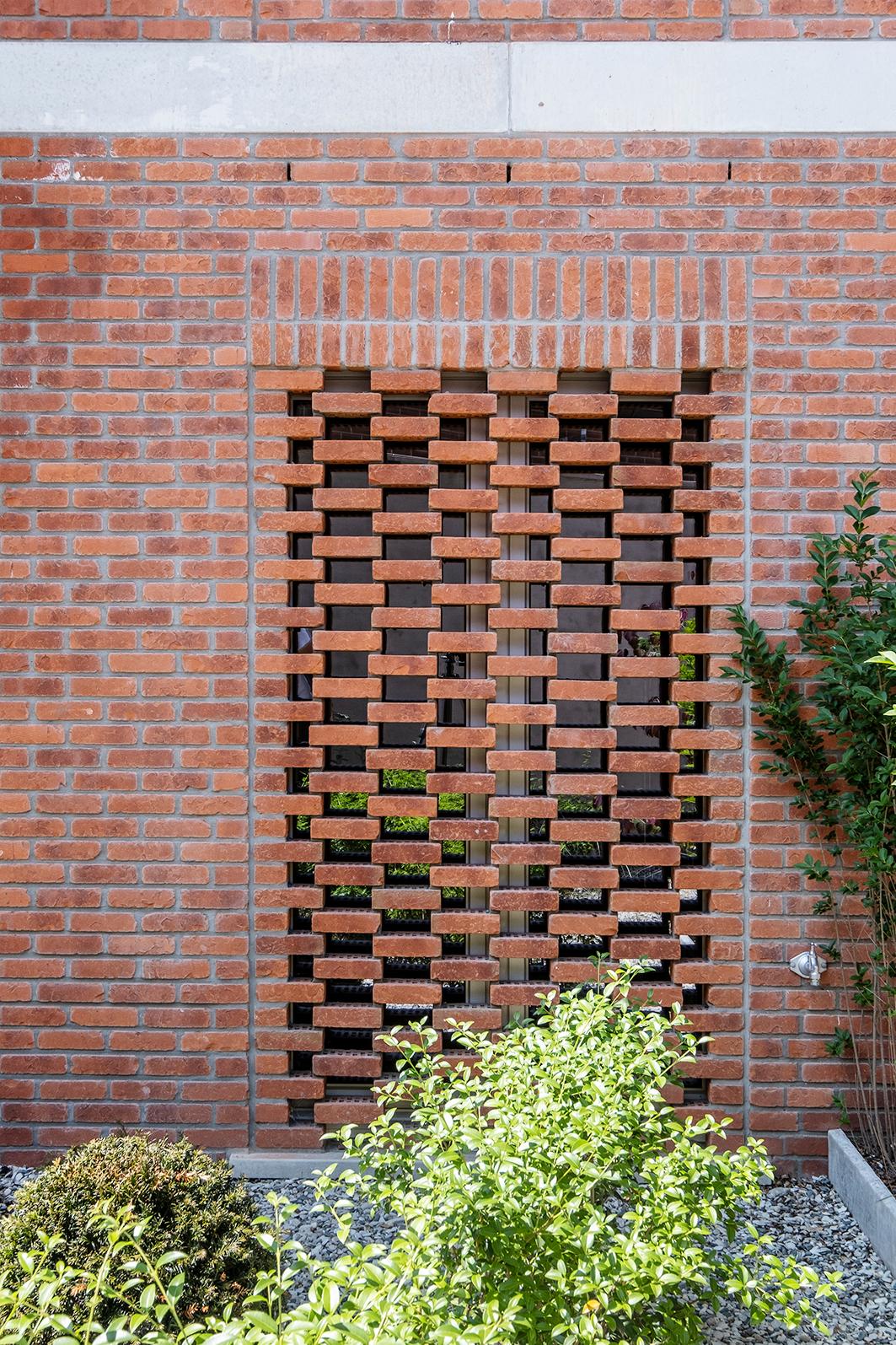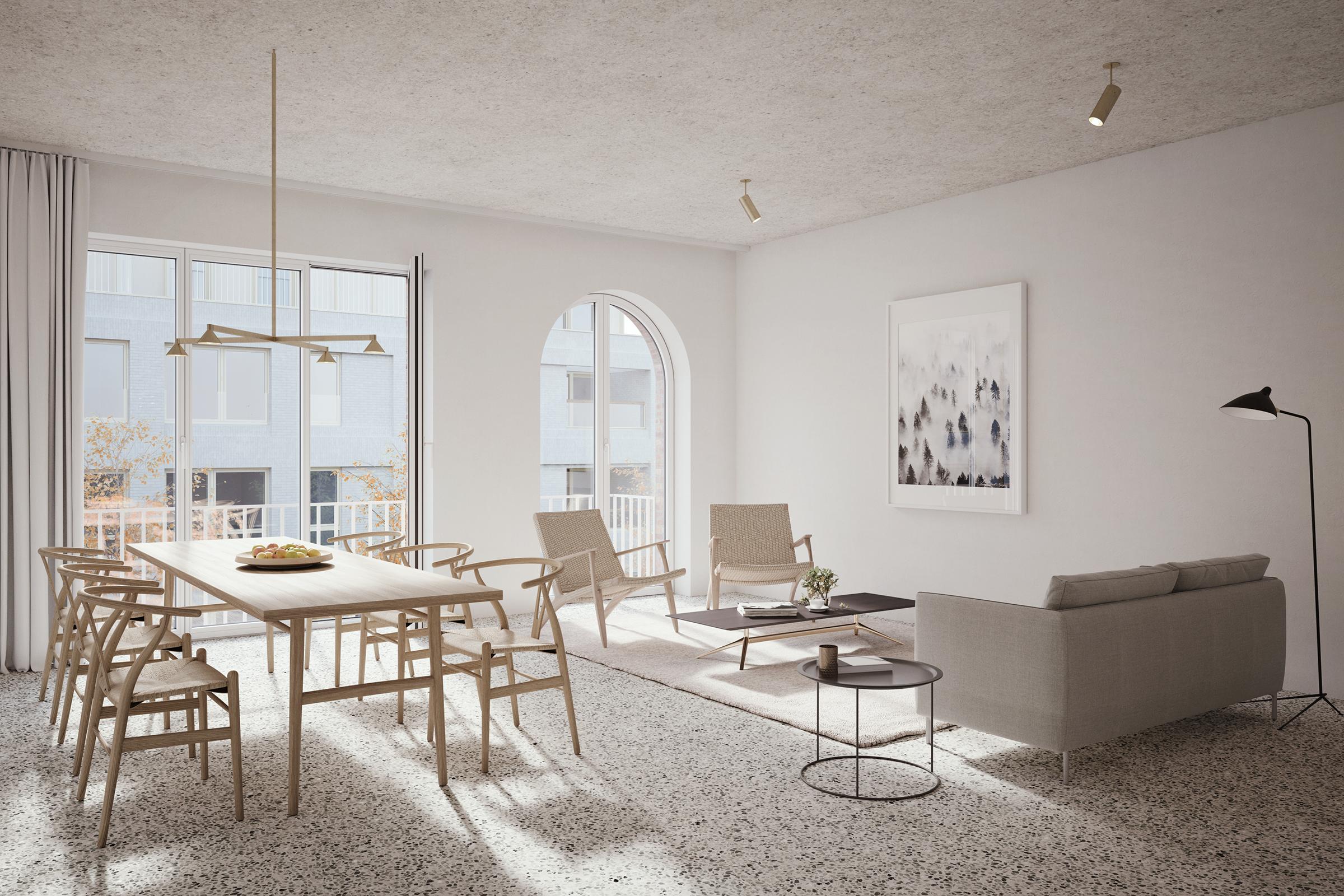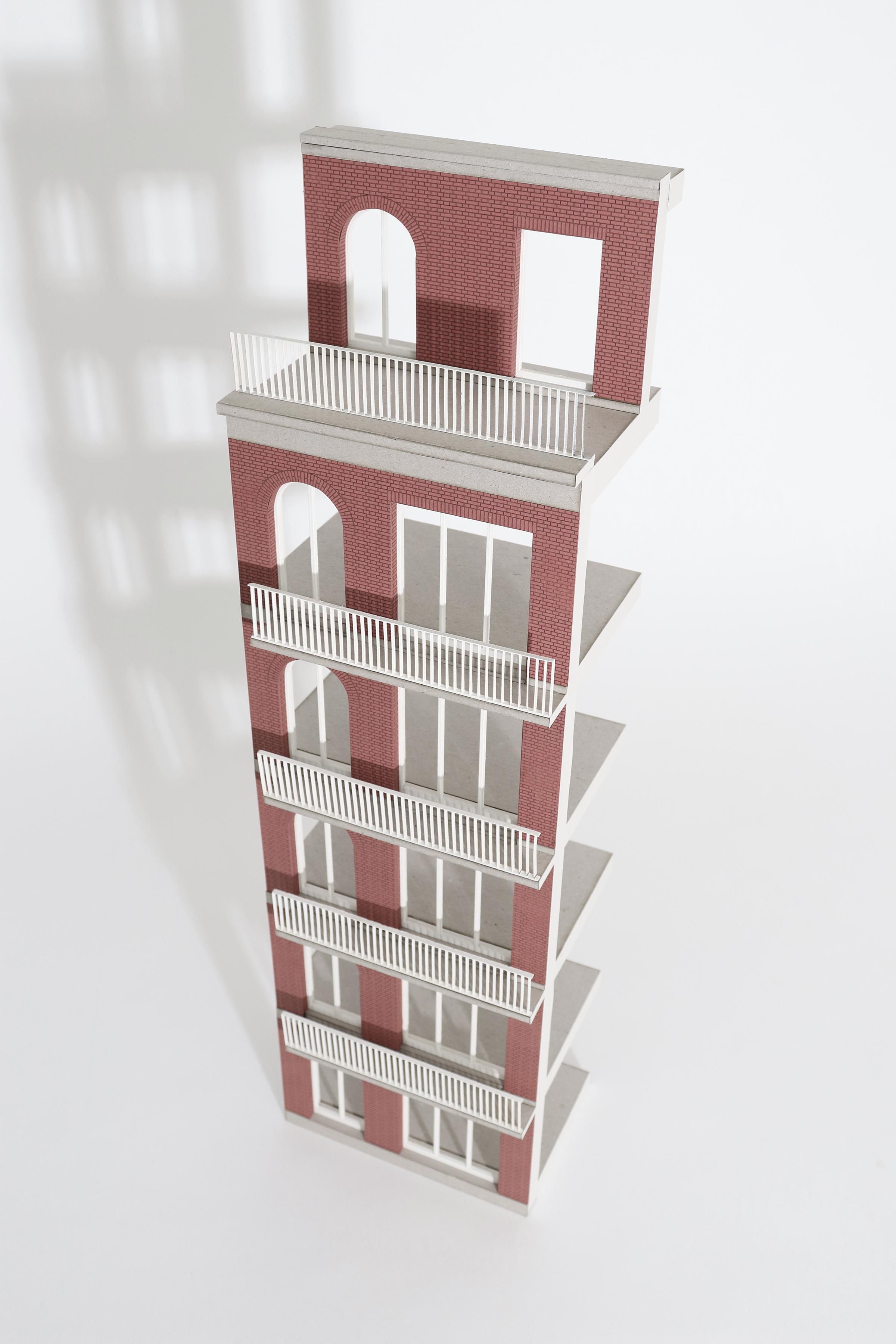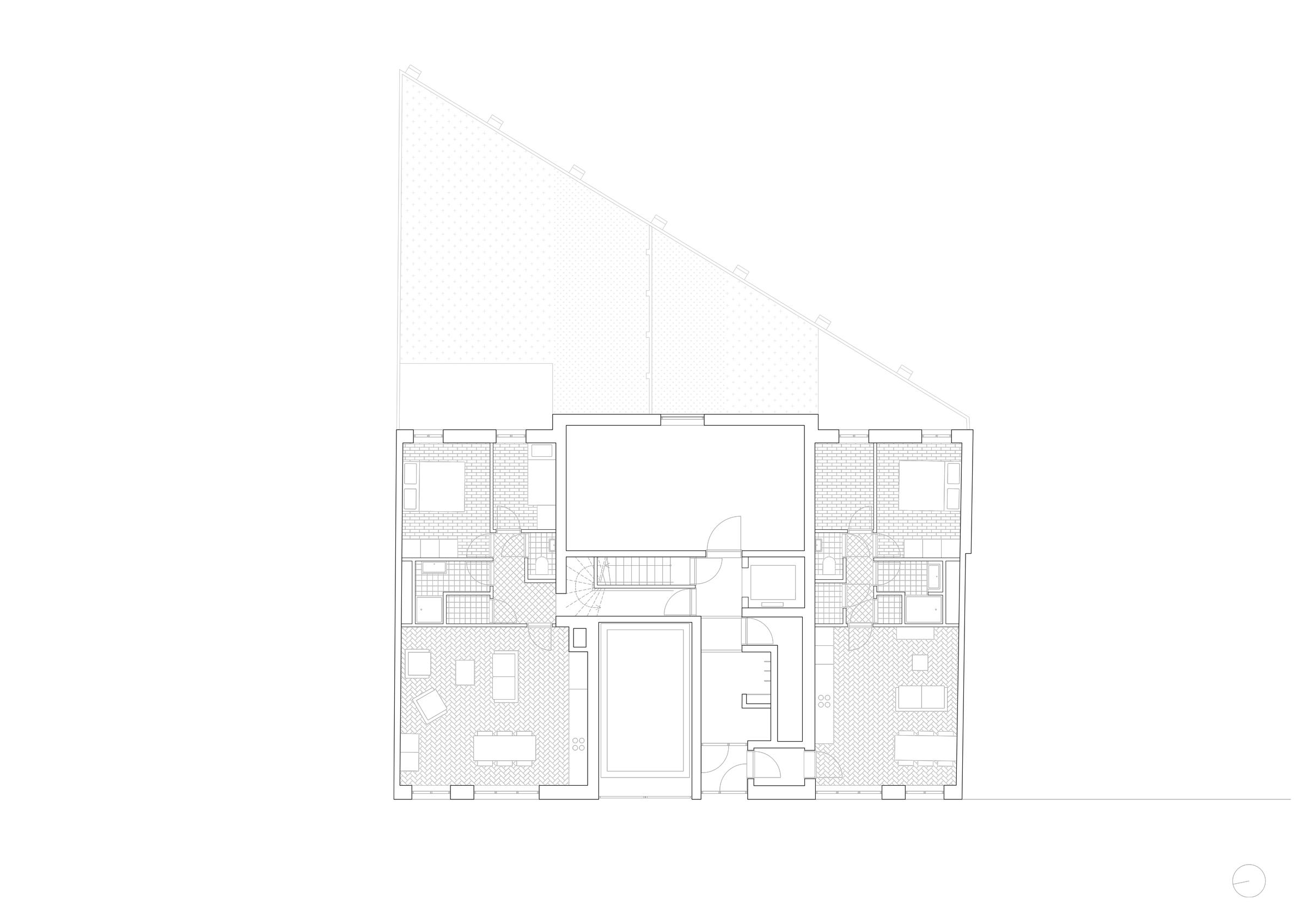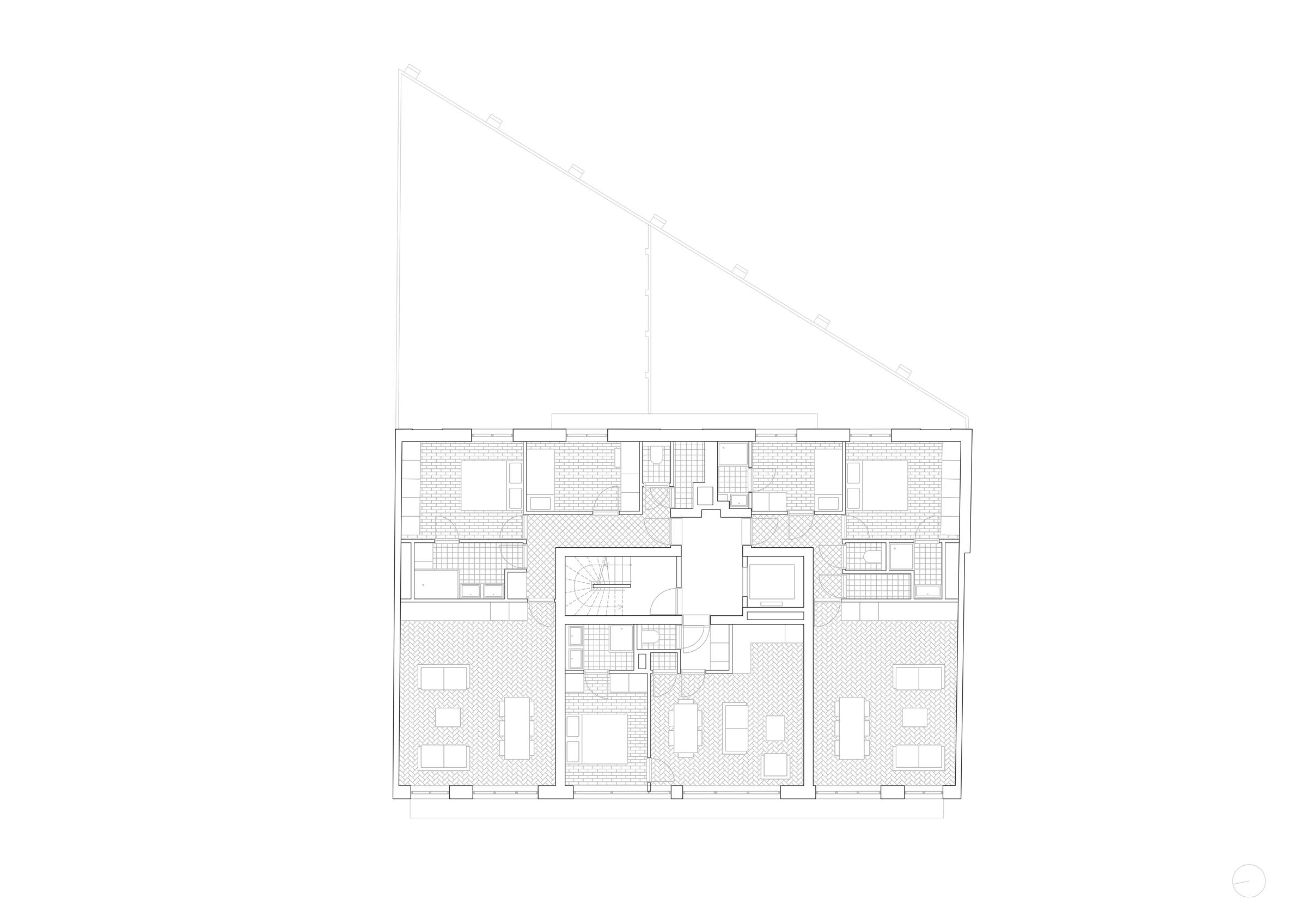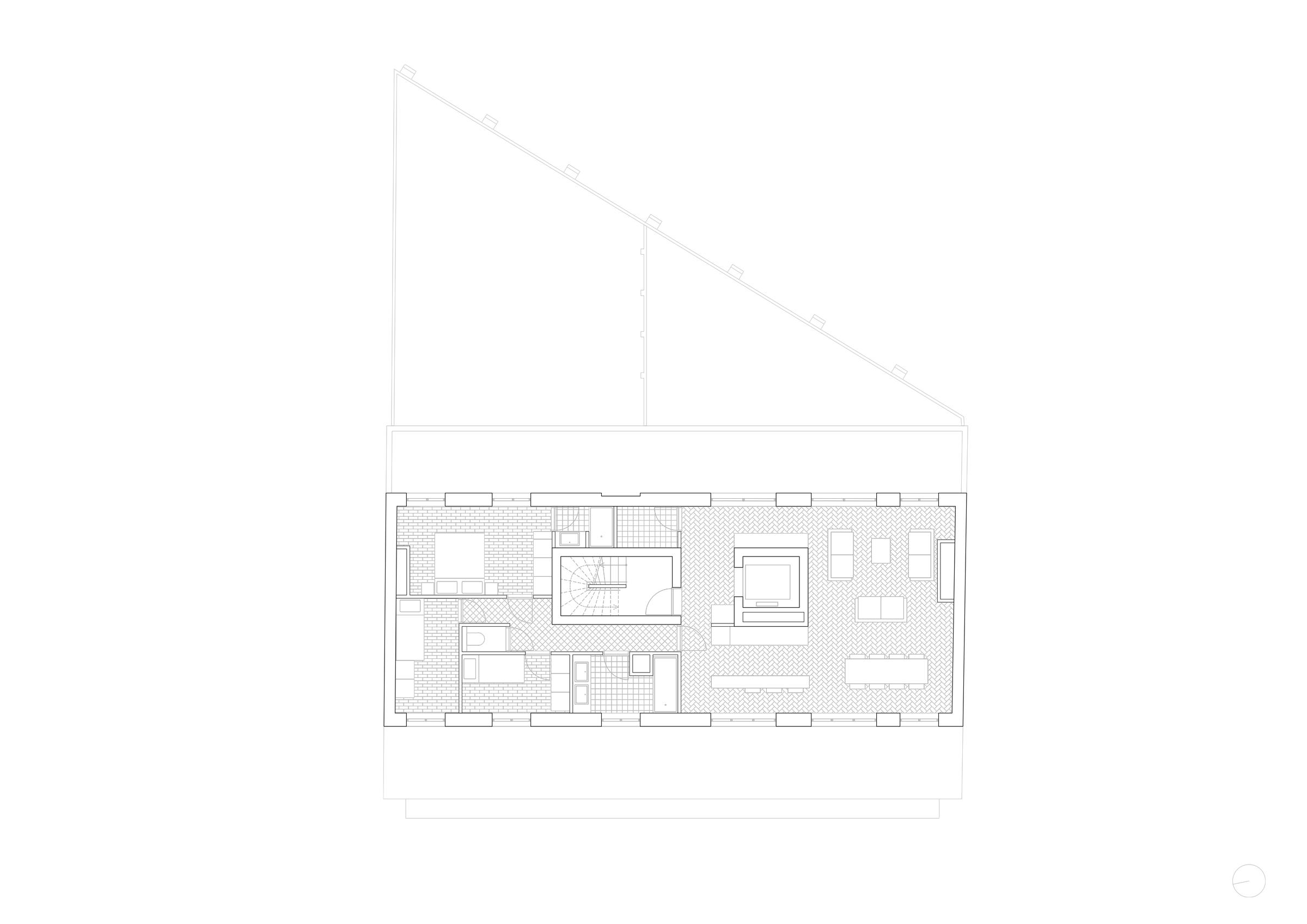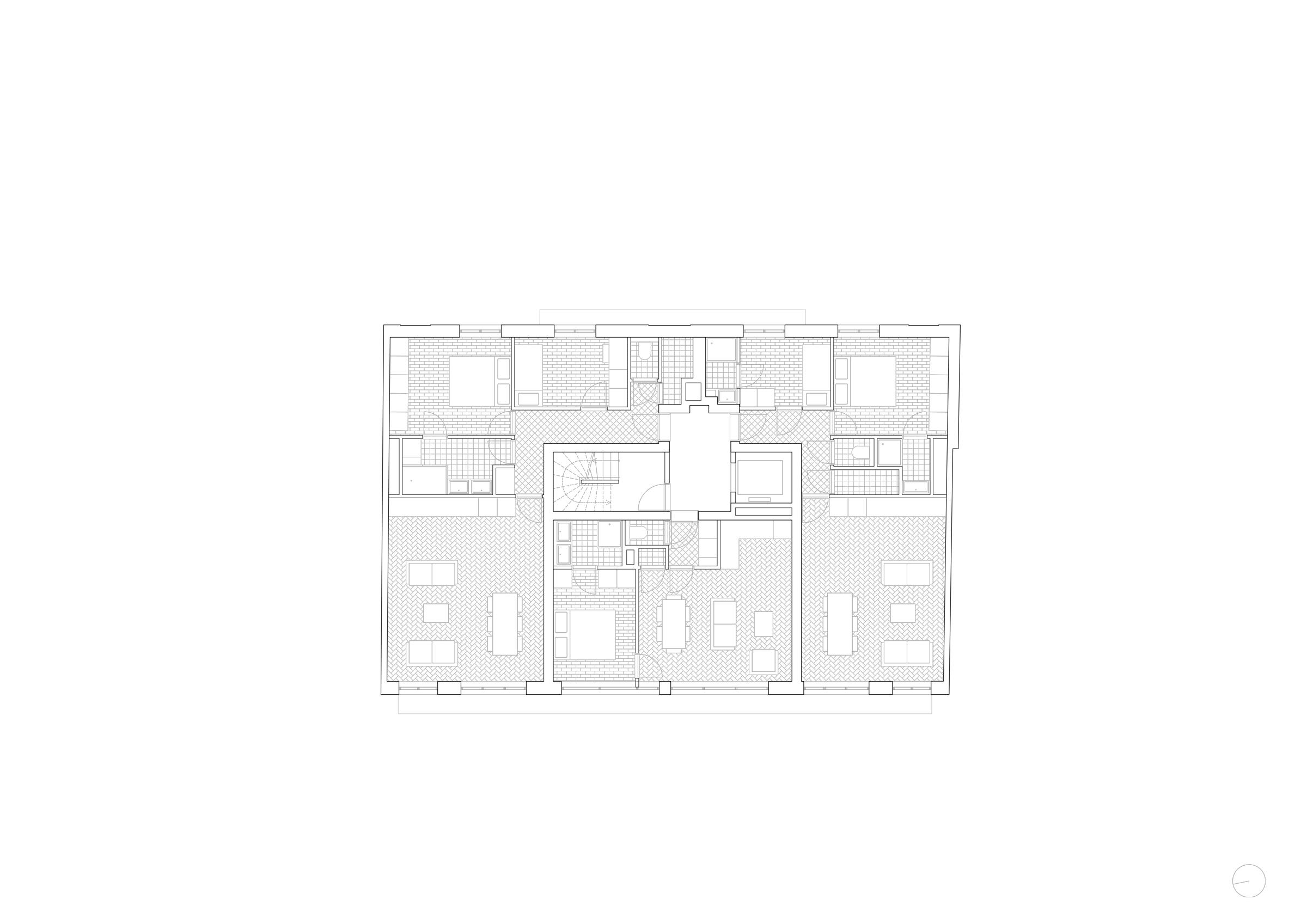Bredastraat — Antwerpen
De Dam als wijk kent een turbulente geschiedenis en is historisch lange tijd geïsoleerd geweest. Met de introductie van het park en de dokken zijn de grenzen geëvolueerd en is de wijk zich gastvrijer gaan opstellen. Grootschaligere woonprojecten in alle vormen en formaten ontpopten zich naast elkaar.
We evalueerden de wijk grondig en kwamen tot de eenvoudige conclusie dat de nieuwe typologieën die in de wijk ontstaan verwijzen naar de schaal van pakhuizen, vaak omdat ze simpelweg het plot vullen van een afgebroken pakhuis. Gelet op de intrinsieke kwaliteiten van deze typologie en de beeldkwaliteit die het collectieve geheugen prikkelt, eren we met ons pakhuis in de Bredastraat die pakhuizen die in de wijk zijn blijven geloven en intact bleven. De referentie schrijft zijn eigen regels. Regels die vragen om herbekeken te worden en verder mogen gedijen, solidair met het turbulente maar rijke verleden van de wijk.
As a district, De Dam has a turbulent history and has been historically isolated for a long time. With the introduction of the park on one side and the docks on the other, the boundaries evolved and the district became more welcoming. Large-scale housing projects of all shapes appeared side by side.
We thoroughly evaluated the district and came to the simple conclusion that the new typologies emerging in the district refer to the scale of warehouses, often simply because they fill the plot of a demolished warehouse. Given the intrinsic qualities of this typology and the visual quality that stimulates collective memory, we honour those warehouses that have remained in the district and remained intact with our own, new warehouse in the Bredastraat . The reference writes its own rules. Rules that ask to be reconsidered and allowed to thrive further, in solidarity with the district's turbulent but rich past.



